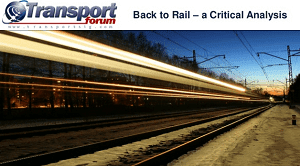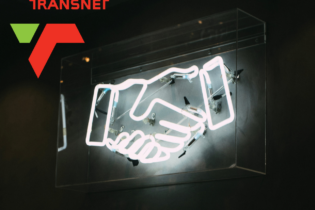“What is the future role of rail in South Africa’s global competitiveness?” This was the question asked by Barloworld’s Kate Stubbs as she reflected on South African business perceptions of rail during the transport forum’s special interest group topic: Back to rail – a critical analysis.
“In 2005 we had a shockingly poor perception of rail. Actually, the perception of road freight wasn’t much better. Even though our road infrastructure at the time was far better than it is now,” she said. “The 2009 Supplychainforesight survey showed that the industry believed there was a need to engage with the government on rail, but that a lot more was needed to be done to develop the general freight lines. A wave of collaboration started happening when supply chain became much more topical. In the first few years, it was very much an operational function, but now supply chain is a strategic function, with more directors in that space.” Stubbs said that in 2009, people started to become more aware of what Transnet were doing and what their plans were. “There was an awareness that the country needed Transnet’s help to improve South Africa’s rail infrastructure. The recession created a muted atmosphere, and it became quite negative again. But still, there was a drive for public-private collaboration, which was seen to be vital. However, there was very little confidence in Transnet, in government, and in its rail initiatives. There had been quite a bit of talk, but very little action was seen,” she recalled. At the time, 79% of people surveyed said that they moved just 10% of their goods on rail. “We asked; if there was adequate capacity and you were able to move your goods on rail, would you move more? The result was that 46% said they’d move up to 20% of their goods on rail. So there has always been this need and want and willingness to move goods to rail.”Stubbs said there had been animosity between the road and rail freight industries. “Each has pros and cons and both are under a huge amount of pressure right now. From a road transport side, there are shocking perceptions towards the industry, with safety, governance and road behaviour major concerns. From a customer side, there are concerns about safety, risk and costs,” she explained.
“Rail concerns pertain to capacity, accessibility and reliability. We need to start working together because ultimately, we support each other. If we want our own businesses to work and to remain competitive as a country, it is fundamental that we start changing our dialogue.” It was not all bad though. “There is great stuff happening. Lot’s of partnerships are happening. We’ve formed a partnership with Transnet, we’ve signed an MOU and it’s starting to reap rewards and the dialogue and engagement have been fabulous. But it’s not only about that, it’s also about collaborating with other industry players. Co-opetition is happening. No-one wants to own assets alone, so there’s a propensity and a willingness to start engaging more openly. Public-private sector engagement is key. We don’t have the answers for this, but together, we could work out how we do it more effectively. We’ve got to change perceptions of both industries and while that is happening, it’s happening too slowly.” Stubbs concluded by saying she’d like to see clarification on the South African transport strategy, including on roles and responsibilities of different departments, ownership and accountability. “We need to know who does what as it’s quite confusing. There is an opportunity for all of us to create competitive strategies – now and for the future – for our country and for our businesses.”







